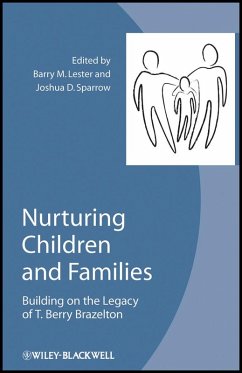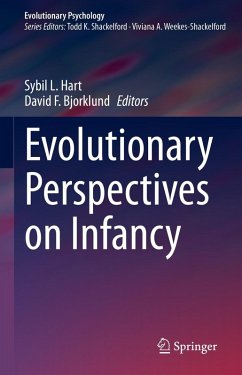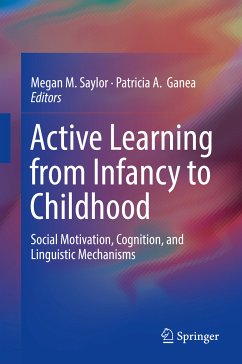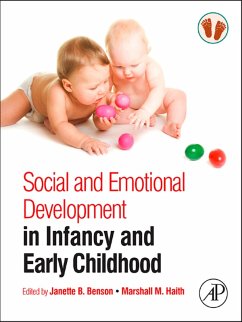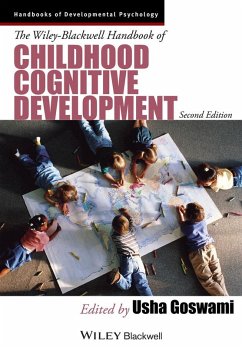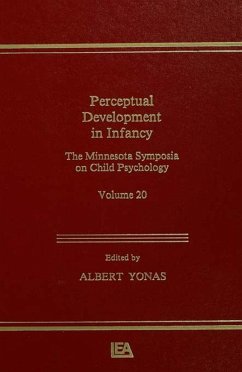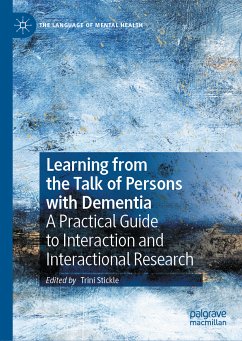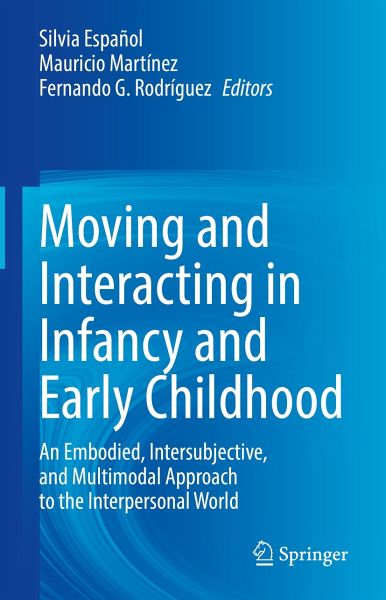
Moving and Interacting in Infancy and Early Childhood (eBook, PDF)
An Embodied, Intersubjective, and Multimodal Approach to the Interpersonal World
Redaktion: Español, Silvia; Rodríguez, Fernando G.; Martínez, Mauricio
Versandkostenfrei!
Sofort per Download lieferbar
Statt: 106,99 €**
72,95 €
inkl. MwSt.
**Preis der gedruckten Ausgabe (Gebundenes Buch)
Alle Infos zum eBook verschenkenWeitere Ausgaben:

PAYBACK Punkte
36 °P sammeln!
This book introduces studies on infant and early childhood development that are in a permanent dialogue with the psychology of music, the philosophy of mind, and human movement studies. They are based on an innovative framework that combines embodied cognition, the multimodal approach to child development, and the second-person perspective in social cognition. This frame of reference allows authors to revisit relevant topics in developmental psychology, such as adult-infant interactions; early intersubjective experiences; the development of perceptual, verbal and gestural communication skills;...
This book introduces studies on infant and early childhood development that are in a permanent dialogue with the psychology of music, the philosophy of mind, and human movement studies. They are based on an innovative framework that combines embodied cognition, the multimodal approach to child development, and the second-person perspective in social cognition. This frame of reference allows authors to revisit relevant topics in developmental psychology, such as adult-infant interactions; early intersubjective experiences; the development of perceptual, verbal and gestural communication skills; as well as the complexity of play in infancy and early childhood.
In the field of infancy and early childhood studies, the three viewpoints brought together in this volume had a clear innovative impact. Embodied psychology showed the body to be the primary agent in the interactions that shape the infant's psyche. The second-person perspective exhibited the direct, transparent, I-Thou contact involved in the first patterns of reciprocity between adult and infant, and the multimodal theory of perceptual development revealed an infant immersed in a multisensory environment conveying information to all perceptual systems as a unified experience. The studies presented in this volume combine these three viewpoints and link them through the use of analytical tools and concepts from the temporal arts (music and dance). This way of conducting empirical research on some central topics in early infancy led to an aesthetic conception of development that emphasizes bodily experience, temporal affects and their intertwining with symbolic capacities
Moving and Interacting in Infancy and Early Childhood: An Embodied, Intersubjective, and Multimodal Approach to the Interpersonal World will provide innovative tools for developmental and cognitive psychologists studying the development of early socio-cognitive skills in infants and young children, and will also serve as a rich source of information for researchers and practitioners in other fields, such as education and nursing, who can benefit from cutting-edge knowledge in developmental sciences.
In the field of infancy and early childhood studies, the three viewpoints brought together in this volume had a clear innovative impact. Embodied psychology showed the body to be the primary agent in the interactions that shape the infant's psyche. The second-person perspective exhibited the direct, transparent, I-Thou contact involved in the first patterns of reciprocity between adult and infant, and the multimodal theory of perceptual development revealed an infant immersed in a multisensory environment conveying information to all perceptual systems as a unified experience. The studies presented in this volume combine these three viewpoints and link them through the use of analytical tools and concepts from the temporal arts (music and dance). This way of conducting empirical research on some central topics in early infancy led to an aesthetic conception of development that emphasizes bodily experience, temporal affects and their intertwining with symbolic capacities
Moving and Interacting in Infancy and Early Childhood: An Embodied, Intersubjective, and Multimodal Approach to the Interpersonal World will provide innovative tools for developmental and cognitive psychologists studying the development of early socio-cognitive skills in infants and young children, and will also serve as a rich source of information for researchers and practitioners in other fields, such as education and nursing, who can benefit from cutting-edge knowledge in developmental sciences.
Dieser Download kann aus rechtlichen Gründen nur mit Rechnungsadresse in A, B, BG, CY, CZ, D, DK, EW, E, FIN, F, GR, HR, H, IRL, I, LT, L, LR, M, NL, PL, P, R, S, SLO, SK ausgeliefert werden.



